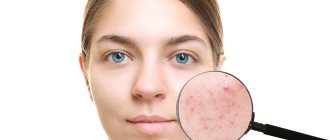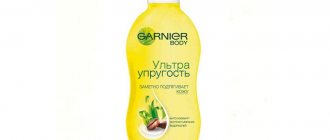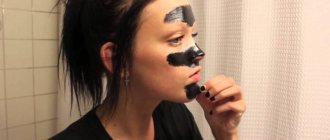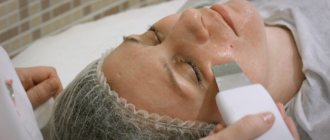Fabric masks! Raise your paws, those who have a strategic stock of these cool things exceeding a dozen, and always want to try something new? I bet there are a lot of you! I am no exception; I absolutely need fabric masks everywhere. On trips, at home, visiting. They don't take up space, replace serums and creams, and are easy to use. However, they are not as simple in their element as we used to think. There are at least five common stereotypes about these things, and, accordingly, possible errors in use. And it is precisely them that I would like to talk about, because at one time I also fell for the bait of these incorrect judgments.
1. Sheet masks can be used 2-3 times a week
In fact, there are no restrictions on the use of fabric masks. You are limited only by your own desires and means. Although one mask is inexpensive, using it every day can cost you a pretty penny... Although who ever stopped that? However, there are many wonderful masks starting at 29 rubles. For example:
2. Sheet masks are all the same and can only moisturize
At one time, to my shame, I also propagated this myth. However, nothing stands still, and the development of this industry has led to the appearance of matting masks, mud masks, and foil masks, which serve completely different purposes. Therefore, if you need hydration, take moisturizers. The rest will reward you with additional special effects depending on your goals! For example: mask with hyaluronic acid
3. Sheet masks are self-sufficient
The myth that a sheet mask will replace your toner, serum, lotion and cream is very common. And he is partly truthful, but you only need to focus on your own skin. For example, toner is absolutely necessary, and avoiding its use will reduce the effectiveness of the mask. As for serums and essences, it all depends on your desire. You can safely apply your serum under a fabric mask, because the concentration of benefits in the mask is still lower than in a full-fledged ampoule product. Use the cream when you think you need it. Listen only to yourself and your feelings. An excellent toner that will enhance the effect of the mask, with a valuable ingredient - Asian centella -
4. Fabric masks can be used periodically and randomly
Can. However, there are a number of masks that simply need to be done in a course. In case you have special indications. For example, masks with vitamin C for skin renewal, or collagen for elasticity. This rule works the same way as with alginate masks. For example, kiwi extract contains a large amount of vitamin C: Innisfree It's Real Squeeze Mask Kiwi
5. Sheet masks can be used twice
No. It is forbidden. In no case. Even if you still have gel inside the package, and even if you put the mask in the refrigerator. The seal is broken, the mask has been on your face and is no longer sterile. You don't use the same cotton pad twice, do you? It's the same with masks.
6. Fabric masks can be kept warm and are airtight
This is also completely untrue. Despite the fact that the masks are packaged, elevated temperatures and direct sunlight can cause damage even to a closed product. More than once I opened a “fermented” mask, the aroma of which hinted that it was no longer fresh. Better put it in the refrigerator or at least in a dark, cool place
7. Sheet masks can be used in the morning
Yes, you can, but these products will work much more effectively at night. At night, our skin perceives external influences much more strongly, rests and renews itself. Using a mask in the morning is nothing more than a pleasant ritual that you don’t have to cancel, but it will only work for hydration. For example, a restorative face mask
8. Fabric masks should not be applied for 20-30 minutes
No, that's not true. 20-30 minutes is the time recommended by the manufacturer. However, leaving the mask overnight will also be effective. Usually the impregnation of masks is very rich, and you can easily fall asleep in it and wake up in the morning with a perfect face, because the mask worked on it for several hours. One of these “thickly soaked masks” is Petitfee Silk Amino Serum Mask with silk proteins
9. Cellulose-based sheet masks are more effective than woven ones.
This is the ultimate trend and fashion; manufacturers are experimenting with shape, offering either whole-cut, cotton, or cellulose fabric. However, this does not affect the efficiency at all. The only exception is a foil mask, which creates something like a sauna on the face, and the impregnation under this “cover” penetrates deeper into the skin.
Do you recognize yourself? Have you made any of the mistakes listed above, or maybe your own?
Last time we looked at the pros and cons of homemade face masks and store-bought ones. Under no circumstances apply a face mask to the area around the eyes, as when dry, it can cause wrinkles around the eyes on mobile and thin skin. It is best to apply a rich cream around the eyes and a mask on the rest of the face.
How to apply a face mask is up to everyone. You can use your fingers, or you can use a special brush, but then you may not be able to apply it in a thick layer. The main thing is not to stretch your facial skin when applying the mask.
What layer to apply the mask: thin or thick. If you bought a mask in a store or salon, follow the instructions on the package. Many ladies apply homemade in a thick layer, since it then dries more slowly, and therefore lasts longer.
When the mask is applied, it is better to relax your face. Avoid talking during this time, or better yet, just lie down and rest. Grimacing while wearing a mask can only lead to premature wrinkles... but do you need that?
FAQ:
How and when to wash off the mask
Most masks should be washed off 15-20 minutes after application.
Remember: the mask shares nutrients with the skin only when it is wet. It's okay if the mask starts to dry out a little on the skin. But don't let it crack - it won't lead to anything useful. Moreover, this can lead to wrinkles on the face.
However, using the cream after the mask is absolutely not prohibited!
What to do with a mask if it doesn't fit?
Carefully monitor how you feel when applying a mask for the first time: whether you buy it in a store, or add a new component to your own homemade mask. If you notice a strange tingling or unpleasant effect, immediately wash off the mask, unless, of course, you want to walk around with red spots later.
If a face mask causes you irritation or allergies, do not use this mask or component again! You can give a purchased mask to a friend or mother - maybe it will suit them.
If a mask causes irritation or allergies on your skin, you should no longer use the mask or component! You can give a purchased mask to your mother, sister or friend - maybe it will suit them.
Also, if the mask doesn’t suit you or you just don’t like it, then it can also be used as a mask for your feet or hands. For this you need cotton gloves or socks. Thoroughly wash the area where we will apply the mask, clean it with a scrub, apply a thick layer of the mask, and put on gloves or socks on top. This is the best way to go to bed.
After a particular cosmetic procedure, additional care is required. This is why many girls think about what to apply to their face after a mask to make their skin look more well-groomed. There are a lot of different means, but you need to know which one to use in a particular case.
Which toner to choose after a face mask?
After the mask, especially for oily skin, it is necessary to apply a tonic to the face that will soothe the epidermis. What to prefer: cream or lotion? The answer is clear - both means. After the mask, a cucumber tonic based on chamomile is suitable; for oily skin, it is good to use lotions with salicylic acid. If for some reason the epidermis is damaged, or a burn occurs after the procedure, then an alcohol-based tonic should be excluded.
So, which one to choose: homemade or purchased? Of course, the easiest way is to buy ready-made liquid in the store, but freshly prepared liquid will be the healthiest.
To make tonic at home, there are 2 ways:
- It is necessary to prepare alcohol and the ingredient that will be used. For example, chamomile, sage or another component. For 0.5 liters of alcohol, 1 teaspoon of additional ingredient. You need to insist for at least a week. Then wipe your face with the prepared mixture.
- You will need a decoction of herbs that is suitable for a specific skin type. To prepare it, you don't need any special skills. You can simply brew the filter bag in boiling water and leave for 1 hour. After the liquid has cooled, squeeze out the filter bag and you can wipe your face with the resulting liquid. However, this tonic should be stored for no more than 36 hours in the refrigerator.
What cream to use after a face mask
Cream after a face mask is a necessary procedure for moisturizing the skin. You should also remember that it is not recommended to leave the composition for a long time. It is enough to leave the mask on for about 15-20 minutes and rinse with water. However, the skin must be nourished, especially after the sauna. In such conditions, the mask penetrates deeper, but the lost moisture must be replenished with the help of additional means.
So, which cream to choose:
- For oily skin, any composition with a mattifying effect based on zinc is suitable.
- For dry skin, it is better to prefer creams with a denser texture that can nourish it more intensely.
- For sensitive skin or after a biorevitalization procedure, it is good to use hypoallergenic formulations without fragrances and other irritating components. These can be eco-creams or homemade ones.
Whatever composition you prefer, it’s better to start with a sensitivity test. To do this, apply the cream in a small amount to a limited area and monitor the reaction.
morning face mask
My periods were relatively short, not like I usually have.
the weight hasn’t come off, my weight has dropped, I take phytoestrogenic supplements (more on them below*) and herbs in the composition, Oh my, it’s usually late, at 22-23 dc. quarantine has a terrible effect, of course, I’m at risk, as an asthmatic, I don’t go outside at all, there’s dust on the street, as usual in Israel. *It is worth mentioning separately some dietary supplements that I take BEFORE ovulation for a better balance of estrogen in relation to prog in the first phase. and for the cultivation of ulcers for ovulation.
So ,
From the 4th day of bleeding, I drank Yeminite Gum Ext copiously for a couple of days. (a terrible-tasting tincture), for healing hematomas that bleed for a long time and cause unnecessary bruising. (these hematomas then loom on the ultrasound, they are especially annoying next to the PJ) it helped, everything dried quickly to a light discharge. did not expect.(!)
At the same time, I chaotically take oils, omega 3, evening primrose oil, borage oil, they all soften the oil and give it an edge. With these oils, you also need such foods in the diet as: all fish, eggs, cheeses, and everything with Associated with good fats. (important from an animal). , I also sometimes drink Black Cohosh capsules (black cohosh), it also has a phytoestrogenic effect, I drink it every other day so as not to burden the gastrointestinal tract. Soy isoflavonide did not work, because The capsules are too big (from Solgar). , I also drink Tannenblut D tincture for the bronchi, it contains sage, mint .. so it’s suitable for O. , I also read about studies on Vitamin D and its effect on the quality of eggs and their ability to implant .. in short, three drops of vitamin D on the day before O. seems to be all. Movements of the pelvis and legs are also important for the flow of blood to the pelvic organs. This also contributes to O., for example, twerking or belly dancing. or an exercise bike (not fast), 20 minutes a day.
as well as zinc in an increased dose. Zinc is given special attention; it is part of the egg and an important character in conception.
Today
13 dc discharge, not yet, but still... no test for O at all. drank a glass of beer. PA as planned tomorrow.
14 dts (pa











